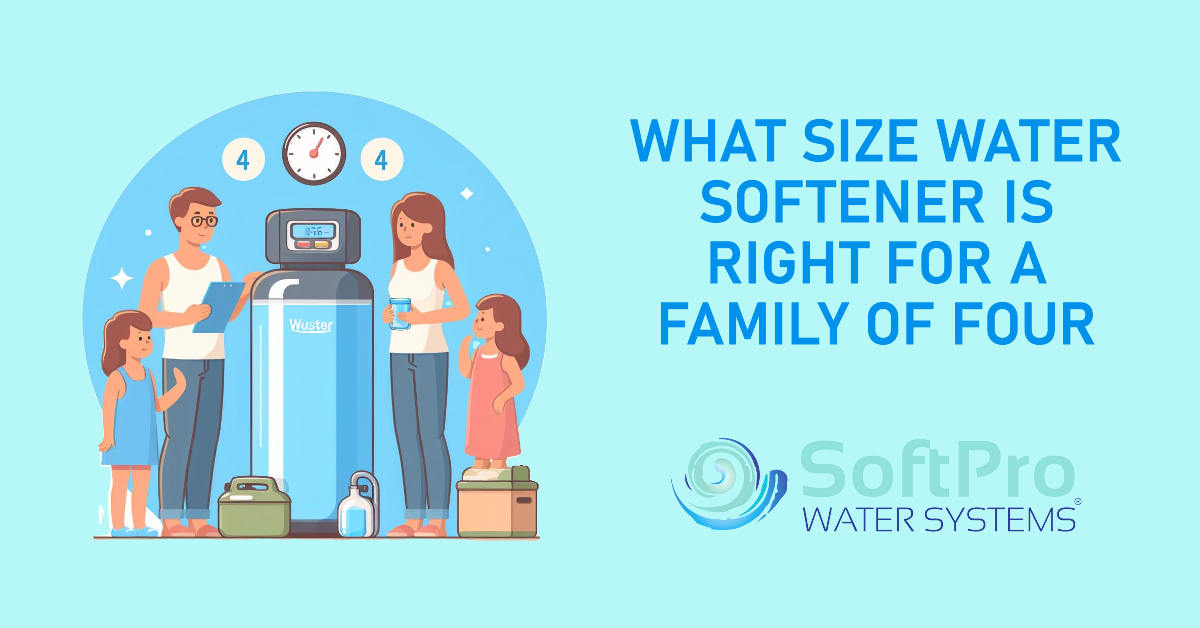Do I Need to Adjust the Chosen Size Based on the Softener's Regeneration Frequency?
Table of Contents
Yes, you absolutely need to consider the regeneration frequency of a water softener when determining the appropriate size for your household. If you've already selected a water softener but discover it's regenerating too frequently, you may need to adjust the size. Undersized softeners strain to keep up with water demand, leading to inefficiency and potential hard water problems.
Understanding Water Softener Sizing and Regeneration
- Grain Capacity: Water softener size is measured in grains, indicating the total amount of hardness minerals (calcium and magnesium) the unit can remove before requiring regeneration.
- Water Hardness: Measured in grains per gallon (GPG), water hardness determines the load on the softener. Very hard water necessitates a larger softener or more frequent regeneration to maintain soft water supply.
- Household Water Usage: Daily water consumption directly influences softener sizing. Larger households require larger softeners with greater softening capacity.
Consequences of Incorrect Softener Sizing
-
Undersized Softeners: Units sized too small for your water hardness and usage patterns will regenerate very frequently. This leads to:
- Inconsistent soft water supply – potential for hard water breakthrough during peak usage periods.
- Increased salt and water consumption due to frequent regenerations.
- Premature wear on the softener components, potentially shortening its lifespan.
-
Oversized Softeners: While less detrimental, oversized softeners can still be inefficient:
- Longer periods between regenerations can lead to stagnation within the resin bed, potentially affecting water quality.
- May use more salt than necessary per regeneration cycle.
How to Determine the Ideal Softener Size and Regeneration Frequency
- Test Your Water Hardness: Obtain an accurate water hardness reading. You can use a home test kit or get a professional water analysis.
- Estimate Daily Water Usage: Consider the number of people in your household and your typical water consumption habits (showers, laundry, etc.). A general estimate is 75 gallons per person per day.
- Calculate Regeneration Needs: Use online calculators or consult with a water treatment specialist to determine the softener size and regeneration frequency that aligns with your water hardness and usage.
Optimizing Regeneration Efficiency
- Resin Type: High-efficiency resins may regenerate less frequently compared to standard resins, lowering water and salt usage.
-
Softener Technology:
- Demand-initiated regeneration (DIR) systems monitor water usage and only regenerate when necessary, increasing efficiency.
- Metered softeners calculate regeneration cycles based on actual water usage.
- Dual-tank systems provide an uninterrupted supply of softened water, even during regeneration.
Examples
- Scenario 1: A family of four with water hardness of 15 GPG and average daily usage of 300 gallons would likely require a 32,000-grain softener regenerating every 2-3 days. An undersized unit might regenerate daily, wasting salt and water.
- Scenario 2: A smaller household with moderately hard water (10 GPG) and lower water usage might only need a 24,000-grain softener regenerating weekly.
Summary and Key Takeaways
Selecting the correct water softener size and understanding its regeneration patterns directly impact the ongoing efficiency and effectiveness of your water softening system. An undersized softener will struggle to meet your household's demand, leading to hard water problems, increased operating costs, and potential premature wear on the unit. Conversely, while less problematic, an oversized softener may use resources less efficiently.
Key Takeaways
| Concept | Importance |
|---|---|
| Water Hardness Testing | Essential for determining correct softener capacity needs. |
| Household Water Usage | Directly influences softener size and regeneration rates. |
| Resin Efficiency | High-efficiency resins can reduce regeneration frequency. |
| Salt Consumption | Undersized softeners often waste significant amounts of salt due to frequent regenerations. |
| Technology Choices | DIR, metered, and dual-tank systems offer varying levels of regeneration optimization. |
If you're experiencing hard water issues, frequent softener regenerations, or notice excessive salt usage, don't hesitate to consult a qualified water treatment professional. They can assess your water quality, usage patterns, and help you determine if a softener upgrade or adjustment is necessary for optimal performance and long-term cost savings.




![SoftPro Chlorine+ Carbon Whole House Water Filter to Remove PFAS, Chlorine, Chloramine & Pesticides [City Water Filters Series]](http://www.softprowatersystems.com/cdn/shop/products/softpro-whole-house-chlorine-filter-282008.jpg?v=1758858973&width=140)
![SoftPro Iron Filter - Iron Master AIO - Best Iron Filter for Well Water [Air Injected Water Filter / Katalox]](http://www.softprowatersystems.com/cdn/shop/products/softpro-iron-master-aio-water-filtration-system-remove-iron-sulfur-manganese-using-air-injection-for-optimal-performance-412868.jpg?v=1758859831&width=140)













